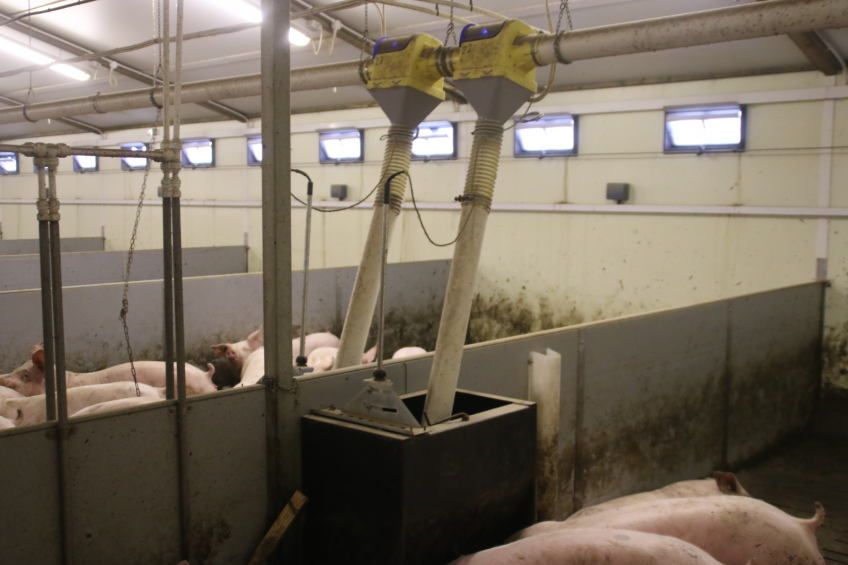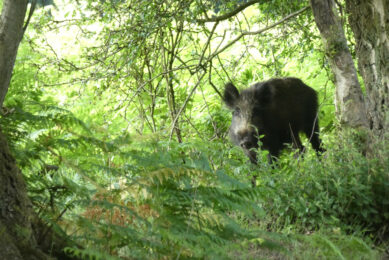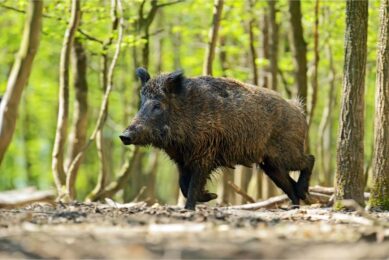Computerised pig feeding trials: accuracy is key

Pig feed rations, do we know meticulously what is going in? Harper Adams University in the UK was determined to know, for best use of its feeding trials. Harper Adams had computerised feeding systems installed on its trial pig unit – and even commercial activities benefited.
Fifty years ago pigs were fed with a bucket and a barrow. The main worry back then was what to do if the bucket broke. Today pigs are fed by computer and the main worry is what to do if the computer crashes. In the 21st century, computer and software knowledge is equally as important as pig knowledge.
Which computer and software to install?
It does make a difference, however, to properly think about which computer and which software to install. A relatively common phenomenon on very large pig units, for instance, is getting the computer that controls the feed system to ‘talk’ to the computer controlling the weigh/sorter installation.
Feeding one finisher feed over say 60 days means that the pigs can be undersupplied with nutrients initially and then later on can be overfed, meaning that valuable nutrients end up in the slurry pit and growth potential is not fully used.
Roxell is a Belgian based livestock equipment company. Some years ago Roxell developed the Multifast feed system. Controlled by computer, the system delivers each individual pen with a separate unique ration, which can be altered daily, unlike some systems which only change weekly or even just fortnightly.
Trials at Harper Adams
The Harper Adams pig unit is carrying out several interesting trials. A long term sow trial involves the effects of feeding omega 3 fish oils on litter size and colostrum quality. Another study funded by the pig section of the British Agriculture and Horticulture Development Board (AHDB Pork) is looking at feeder space and stocking density (20, 22 or 25 pigs/ pen) and which makes use of time lapse photography to study pig behaviour. The ‘STOMP’ project aims to find out how many times slaughter pigs should be ‘drawn’ as some units do this eight times which is clearly uneconomic. Recently the unit installed a number of Nedap feeders to study finisher pig performance. Pigs are group housed as per commercial practice yet individual feed intake and growth rates can be obtained via the feeders.
Split sexing of gilts is commonplace
In the United Kingdom, split sexing of gilts and entires has been commonplace for many many years and this feed system is ideal for delivering different rations to cater for the faster growth rate of entires over gilts. The Multifast system allows the use of up to 20 separate feed ingredients which are delivered to a weigher/mixer and formulated according to data stored in the computer.
After mixing the feed is then despatched to each specific feeder. Running out of feed is very unlikely, because a sensor sends a message back to the computer when a feeder runs low on feed. The computer identifies the ration specific to that feeder, calls up the requisite ingredients which are then weighed, mixed and delivered to the feeder in question.
Accuracy and control over pig feed rations
It was this accuracy and control over rations that caught the interest of Richard Hooper, manager of the 230 sow pig facility at Harper Adams University, a well-known agricultural university in Newport, Shropshire at roughly 65 km north west of Birmingham. The unit is run as commercially as possible whilst at the same time trials work brings in valuable income and Hooper has a long list of companies wanting to have research work carried out.
Whilst some of the breeding pigs on the unit are hand fed, the attractions and advantages of the computer-controlled feeding system for the unit in general and trial work in particular were apparent to Hooper. After all, males are not castrated and split sex feeding is the normal practice at Harper Adams, so the system was installed five years ago.
Hooper says, “Feed from nine separate bins can be blended and feed delivery is extremely accurate with only 5-6 kg being lost from 21 tonnes of feed mixes (99.9% delivered). The system allows upto 20 feed bins. With the Multiphase system I get a saving of £4 (€5.30) per pig sold, over conventional feed systems, which works out at £23,000 (€30,000) per year, a sum definitely not to be sneezed at!”
Harper Adams, United Kingdom
Agricultural university Harper Adams has a farm which is used to demonstrate to students practical aspects of livestock and crop production. On the 230 sow unit, different genotypes are compared with production standing at 13.5 born alive and 12 reared, with 32 sows and gilts farrowing every three weeks. Females are housed in two farrowing houses containing 16 crates. Weaning takes place at four weeks.
Improvemens in feed conversion
Hooper explains that while the system is not cheap, the improvements in feed conversion efficiency and reduction in nutrient excretion outweigh the original investment costs.
He says, “The cost of the Multifast system for the Harper Adams University 230 sow unit five years ago was £40,000 (€53,000) but specialist additions and extra feed bins added another £30,000 (€39,000) to our investment. Once installed and set up the system is simple and easy to manage and with minimal labour requirements would suit much larger units, whilst allowing the unit staff to focus on unit efficiency, growth performance and feed conversion ratio (FCR), making it a serious consideration for the commercial world.”
If all this is not convincing enough – think of this: humans are not infallible and can make mistakes when feeding pigs. Computers, though, never get tired or suffer from hangovers.
Special thanks to Peggy Matthys, Roxell and Sally Hayton, Collinson, for their help in the production of this article. Collinson is the UK dealer for Roxell.











